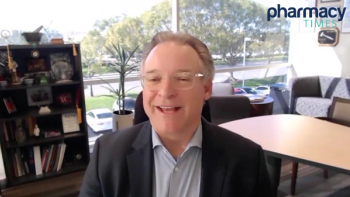
National Health Expenditure Projections Show Slower Growth Rate Over Next Decade
Out-of-pocket costs projected to drop from 11.6% in 2013 to 10% in 2024.
Out-of-pocket costs projected to drop from 11.6% in 2013 to 10% in 2024.
The explosive recent growth of the cost for health care is expected to slow down over the next decade.
New data concerning the 2014-2024 projections of national health expenditures was recently released, showing total health care spending growth is expected to average 5.8% in aggregate from 2014 to 2024. The report was published in Health Affairs by the Centers for Medicare & Medicaid Services (CMS) Office of the Actuary.
The reported rate of growth is significantly lower than the 9% average rate seen in the 30 years prior to 2008.
“Growth in overall health spending remains modest even as more Americans are covered, many of the first time. Per-capita spending and medical inflation are all at historically very modest levels,” said CMS Acting Administrator Andy Slavitt. “We cannot be complacent. The task ahead for all of us is to keep people healthier while spending smarter across all categories of care delivery so that we can sustain these results.”
Due to the increase in availability of health insurance and due to the fact that new specialty pharmaceuticals have hit the market, health spending in the United States has increased by 5.5% from 2013, reaching an estimated $3.1 trillion, or $9,695 per person. Prescription drug spending alone increased 12.6% in 2014, the highest growth since 2002.
Other findings in the report include medical price inflation of 1.4% even with an increased number of people getting health coverage in 2014. Additionally, per-capita premium growth in private health plans is expected to slow to 2.8% in 2015 following the expectation of somewhat healthier Marketplace enrollees and the increasing availability of high-deductible health plans offered by employers.
As more members of the Baby Boom generation become old enough to enroll in Medicare, it is expected that 19.1 million additional members will be added over the next 11 years. In 2014, per capita Medicaid spending is projected to have decreased by 0.8% as the newly enrolled are expected to be somewhat healthier than those who were enrolled previously.
Overall spending, however, is expected to have increased by 12% in 2014 due to a 12.9% increase in enrollment associated with the Affordable Care Act coverage expansion.
The number of persons insured in the United States is projected to increase from 86% to 92.4% as those that are uninsured get coverage over the next 11 years. Additionally, the price Americans pay out-of-pocket for treatment is projected to decline from 11.6% in 2013 to 10% in 2024.
There exists a long road to any significant change in the health care system in the United States. However, Americans can expect a higher rate of insured people, lower out-of-pocket payments and higher government spending when it comes to Medicare and Medicaid, according to the latest data.
Newsletter
Stay informed on drug updates, treatment guidelines, and pharmacy practice trends—subscribe to Pharmacy Times for weekly clinical insights.














































































































































































































